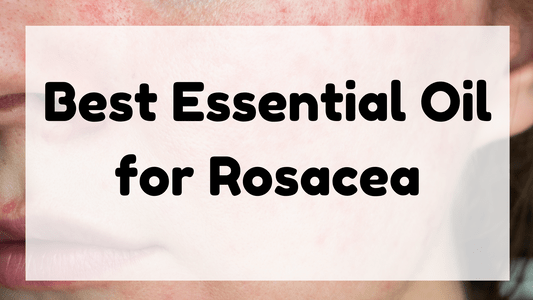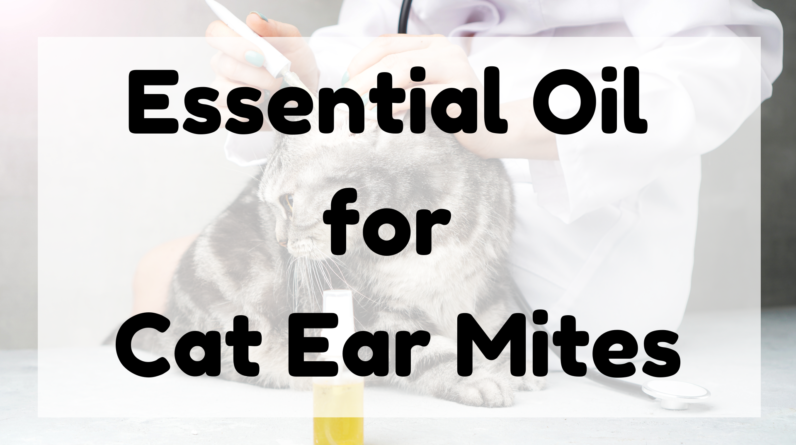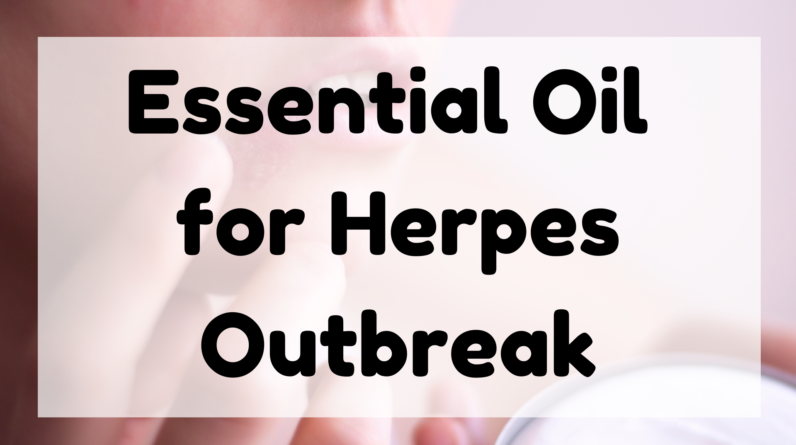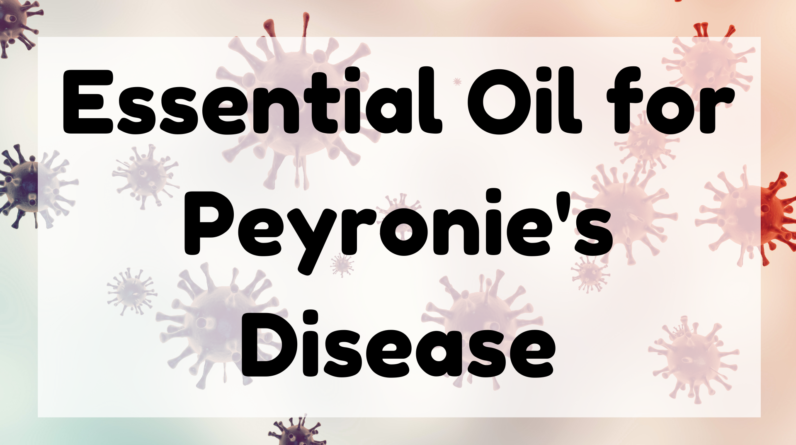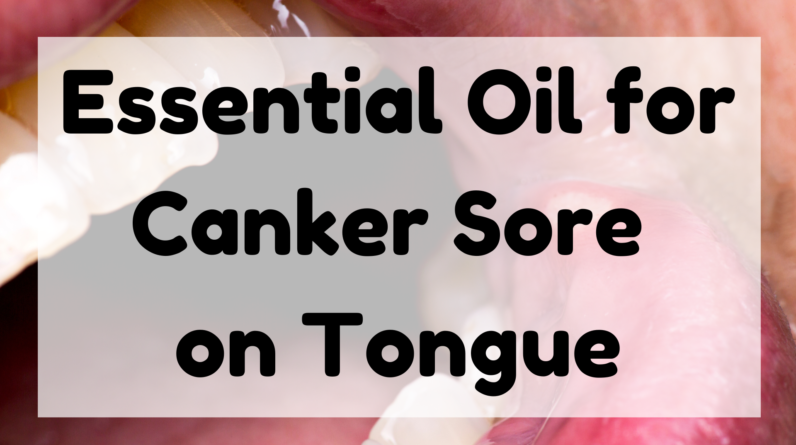Jump Ahead to:
Best Essential Oil For Rosacea
If you’re looking for the Best Essential Oil for Rosacea, there are a number of options available to you.
This article will cover what Essential Oils are, why they’re beneficial, and what causes Rosacea.
After reading this article, you’ll be ready to make an informed decision when it comes to choosing the right essential oil for your condition.
Read on for more information!
The Best Essential Oil For Rosacea
What are Essential Oils
With the rise of natural skin care and diffuser sales, more people are discovering that these essential oils can be used to treat rosacea.
These essential oils are effective at soothing existing redness and swelling, and many of them can help with rosacea flare-ups.
Here are five essential oils you should know about for rosacea.
Juniper: Known for its fresh, woody aroma, Juniper Essential Oil is often used in skincare products.
It contains monoterpene, a natural antioxidant that has anti-inflammatory, antibacterial, and anti-fungal properties.
Juniper Essential Oil is also used to treat irritated skin.
Its anti-inflammatory properties help fight inflammation and promote skin health.
Its antibacterial properties also help soothe rosacea symptoms.
If you want to use essential oils for rosacea, first consult your dermatologist to find out which ones are safe for your skin.
Always perform a patch test first to avoid allergic reactions.
A patch test is an essential part of any skincare regimen.
It’s crucial to follow instructions for use and read all safety information carefully.
Then, follow a recommended program.
If you can’t find a suitable regimen, essential oils are worth trying.
You might be surprised by the results!
You should always dilute essential oils if you plan to apply them topically.
Doing so can be an effective way to soothe your skin and relieve it of redness and swelling.
Dr. Jaliman recommends using essential oils in your facial moisturizer or facial oil.
The best way to use essential oils is to make your own blend or use them in your favorite facial oil.
Chamomile oil is another beneficial essential oil for rosacea.
This oil is derived from the petals of the chamomile plant and has anti-inflammatory properties.
It is also an excellent alternative to rose oil.
It has immense potential to cure a wide variety of skin conditions.
Compared to rose oil, it’s inexpensive and has anti-inflammatory properties.
The best thing about chamomile oil is its ability to soothe sensitive skin.
Properties of Essential Oils
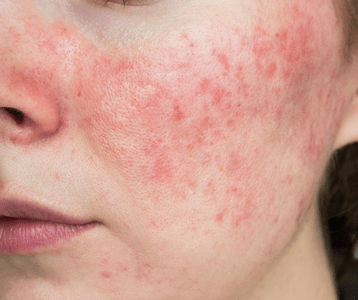
They can also help to reduce the swelling of lymphatic fluids and soothe sore skin.
To get the most out of essential oils for rosacea, you can mix two or three drops of essential oil into a carrier oil.
Apply the mixture to the affected area nightly before bed to get the most out of its benefits.
People with rosacea commonly experience a 50/50 split in the amount of oily and dry skin on their faces.
During times of stress, the skin may experience a feeling of extreme dryness or heat.
The affected area can also be prone to thin, wiry marks, which are broken capillaries.
When these capillaries break, they can leak fluid, forming a clot.
Although there is no known cure for rosacea, it can be managed by limiting the triggers that cause the condition.
In the early stages, essential oils for rosacea can be used to manage the skin’s symptoms.
But because they are extremely concentrated, they can potentially aggravate the condition if used in excessive amounts.
As with any oil, always ensure that you are using the product responsibly.
If you’re concerned, speak with a dermatologist or other healthcare professional before using any essential oil product.
Sandalwood oil has soothing and cooling properties.
It is frequently used in dermatology to treat inflammatory skin conditions.
Its soothing properties combat the swelling and redness caused by rosacea, as well as reduce blood vessel inflammation and damage caused by vascular abnormalities.
Another oil that is commonly used in soothing facial masks is jasmine.
Combined with a carrier oil, this oil can be used to treat the symptoms of rosacea.
Tea tree oil is another good essential oil for rosacea.
It has antimicrobial and anti-inflammatory properties and can be mixed with a carrier oil such as rosehip or avocado oil.
However, tea tree oil should be used with caution and diluted with another carrier oil.
Cause of Rosacea
People with rosacea are often plagued by small, red solid bumps and pimples on their faces.
These bumps may resemble acne but are usually without blackheads or pus.
Rosacea can also cause oily skin and visible blood vessels.
While you may be curious about the cause of your acne, the good news is that there is a cure for this condition.
In some cases, your primary care physician may even prescribe antibiotics to treat your rosacea.
If you have rosacea, your eyes can be affected, as well.
Your eyes can water, become sensitive to light, and itch.
While blocked sebaceous glands can cause dry eyes, other parts of the eye may become inflamed.
Inflammation can affect your cornea, conjunctiva, and edge of the eyelid.
These inflammations can be extremely painful, making it feel like grit is lodged in your eye.
The sensitivity of your motion detector can be so high that even harmless objects can set off rosacea symptoms.
Your immune system is designed to fight off foreign and harmful substances, but rosacea patients’ immune systems can overreact to certain stimuli.
As a result, the facial skin will be red and bumpy.
There are also visible blood vessels on the face.
The main solution is to keep your immune system functioning properly and avoid the factors that trigger your rosacea.
Treatment for rosacea depends on the type of rosacea and the severity of the symptoms.
Initially, your physician may prescribe topical and oral therapy to control the redness and pimples.
However, anti-inflammatory treatments are often used to maintain remission.
There are also new treatments that target specific symptoms of rosacea.
These include a combination of topical and oral medications.
Your physician will prescribe the appropriate treatment based on your symptoms and underlying condition.
Environmental triggers for rosacea are largely unproven, though many environmental factors may contribute.
Exposure to heat and ultraviolet rays, alcoholic beverages, and spicy foods have been found to cause outbreaks in rosacea patients.
Researchers believe the skin of the face is affected by the sympathetic nervous system, which controls sweating and nerve activity.
These two factors may play a role in the development of rosacea.
Best Essential Oil for Rosacea

These properties can help you reduce redness, and ward off blackheads and pimples.
You may want to try using jojoba oil along with a rosacea-friendly essential oil.
Jojoba oil contains a number of other beneficial qualities, as well.
For best results, use diluted essential oils.
If you have a severe case of rosacea, try using 1% of the oil in a carrier oil such as jojoba or rosehip oil.
The team at GiveBody is more than happy to answer any questions you have about using essential oils.
Fortunately, many essential oils have anti-inflammatory properties, making them an excellent choice for rosacea sufferers.
Tea tree is a good choice because it is widely used in cosmetic products.
Evening primrose is rich in gamma-linolenic acid, which is known for its anti-inflammatory properties.
Another great option for those with rosacea is coconut oil.
Coconut oil can be applied topically to red, flaky areas.
For best results, however, you should consult a dermatologist.
A good quality essential oil can greatly diminish the visible symptoms of rosacea.
If you are sensitive to coconut oil, you should consult with a dermatologist about the safety of this treatment option.
But, if you are using it on an everyday basis, it’s safe to use it.
Chamomile: Chamomile oil is extracted from the flowers of the chamomile plant.
Chamomile is one of the best essential oils for rosacea.
Chamomile has anti-inflammatory properties and is excellent for soothing skin.
You can also apply chamomile tea bags to inflamed areas.
Chamomile is also a great option for a rosacea cream or lotion.
NEXT Best Essential Oil for Romance
Legal and Medical Disclaimer
Information provided on the site is for educational purposes only, and does not substitute for professional medical advice.
You MUST consult a medical professional or healthcare provider if seeking medical advice, diagnoses, or treatment.
We do not provide any medical advise.


